The story this time goes that a 50cm diameter hole was found in his cell, protected from the prying eyes of security cameras by a blind spot that blocks portions of the adjoining bathroom from view. Then via a "hi-tech" tunnel, Guzmán descended 19 meters to reach a 1.5km underground corridor that ended in a small house just outside the prison. The corridor was fully fitted with electric cables and illuminated by light bulbs, which Guzmán apparently removed on his way out. Incredibly, this 1.5km tunnel was also installed with a rail and a motorbike. For 'human rights reasons', the security bracelet Guzmán was wearing, which he ditched just before descending into the tunnel, didn't have a GPS tracking system.
In apparent blunder after blunder, despite the alarm being raised minutes after he vanished from camera view, it took 18 minutes for a guard to arrive at his cell. Security alerts to the nearest airport were issued 5 hours after he was last seen and alerts to other nearby airports were issued almost 15 hours later.
As luck would have it, the prison's layout is exactly the same - down to the very last detail - as the other prison Guzmán broke out of in 2001. There are only 3 identical prisons in Mexico, and Guzmán has been in 2 of them. If he's ever arrested again, I wonder where he'll end up. Curiously, the US government requested Guzmán's extradition to the US on trafficking charges just two weeks prior to his escape.
Corruption of the prison system in Mexico is legendary; powerful inmates are known to make themselves at home with access to luxury facilities, communication devices, and everything they need to keep running their businesses. No doubt with this in mind, the Mexican government quickly blamed the prison authorities for Guzmán's escape.
Guzman's second escape was, it seems, only a matter of time. The corporate media in Mexico is supporting the government line; that El Chapo had everyone in the prison under his thumb because you either accept the bribe or suffer the consequences. Guzmán is not a capo to mess with. A decade ago the he was the second most-wanted man in the world, behind Osama Bin Laden. "All involved in his escape will be punished, but recapturing Guzmán will not be an easy task," said Secretary of the Interior, Miguel Ángel Osorio Chong. Indeed, Guzmán roamed free for 12 years following his first escape.
As for the questions surrounding his escape, they are easily formulated: How could a 1.5km long tunnel be built without anyone noticing it? Why was no machinery noise ever heard? How could no-one notice the building of a 'residential home' so close to a prison where some of the most dangerous criminals in Mexico are housed? How did El Chapo's helpers get a hold of the blueprints for a maximum security prison?
The answers provided by the government amount to the same thing: corruption. Because of corruption, everything is possible, and everyone is paid to look the other way. The message to ordinary Mexicans is that they live in a country where everything is possible, therefore everything is a farce.
Omnipresent and all-too-powerful, the cartels' influence reaches very high. Generals, judges and high-ranking officers are in their pockets. An effective narco-state, in Mexico everyone who is anyone has been bought, and whoever tries to expose them is killed. Every year, dozens of journalists learn the hard way that exposing government/cartel corruption is not tolerated.
Mexico's 'narco-culture' has embedded itself in all aspects of life; in music, books, telenovelas, and even museums, where gold pistols of the captured capos are displayed. Each year, thousands of visitors are amused by the excesses, boldness and impertinence of the drug lords, who've acquired this paradoxical mythos that is simultaneously repulsive and heroic.
The unofficial historical narrative is that drug-related corruption grew from the bottom-up, starting back in the 1970s when a few 'ordinary' people, peasants in some cases, living in the highlands of the state of Sinaloa, and seeing an opportunity to smuggle drugs into the US, stumbled on 'the golden goose'. Soon everyone wanted a piece of it, took advantage of lax or non-existing laws and drug cartels grew exponentially in power, to the point that today they wield the same power as multinational corporations.
But this rags-to-riches entrepreneurial 'success story', touted mainly by the corporate media and successive Mexican governments, only goes so far in explaining how this lurid state of affairs came about. On their way to becoming multinational operators, the cartels had the help of the self-styled 'masters of the universe' in Wall Street and the CIA. Without their involvement they could never have 'made it'. High-level US involvement was present throughout the cartels' rise. Long before the cartels came on the scene, these usual suspects were already long in the game. In a very real way, the cartels are merely the Latin American arm of a very North American business.
The Company
Involvement of the CIA in the drug trade is heavily documented. The Politics of Heroin: CIA Complicity in the Global Drug, first published in the early 1970s by Alfred McCoy, Professor of History at the University of Wisconsin-Madison, describes in great detail how the Agency has always been a major player on the international drug scene. From the Corsican mafia in Marseilles after World War II, to waging wars to protect the drug trade in 'the Golden Triangle' in S.E. Asia and the 'Golden Crescent' in S.W. Asia, to extensive connections with the Sicilian mafia and much, much more. McCoy wrote:
"American involvement had gone far beyond coincidental complicity; embassies had covered up involvement by client governments, CIA contract airlines had carried opium, and individual CIA agents had winked at the opium traffic. As an indirect consequence of American involvement in the Golden Triangle until 1972, opium production steadily increased. Southeast Asia's Golden Triangle grew 70 percent of the world's illicit opium, supplied an estimated 30 percent of America's heroin, and was capable of supplying the United States with unlimited quantities of heroin for generations to come."
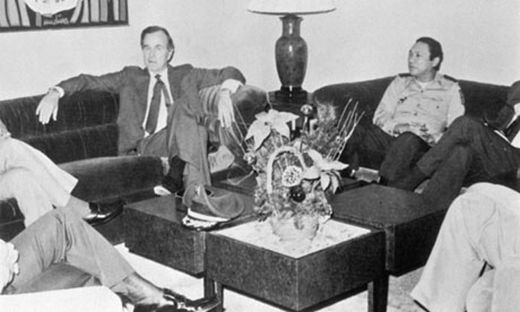
Although McCoy qualifies CIA involvement as "indirect complicity" because the CIA was cautious about its agents directly handling drugs, the evidence nevertheless leads to the conclusion that the CIA, since its inception, has been a constant in every major 'drug war' and trafficking operation around the globe. From supporting drug lords around the world, to waging wars against them when they fell out of favor, as was the case with Noriega and the murderous U.S. invasion of that country, it is safe to say that, without CIA involvement, the international drugs trade as we know it today would not exist.
Another well-established case is the CIA's transportation of opium and heroin via the infamous 'Air America' smuggling operation in Laos during its devastating 'civil war', brought to that helpless little country by the US from the 1950s through the 1970s. The global list goes on and on.
Where Mexico is concerned, Mexican authorities appear to have taken a leaf out of the CIA's book of operations with the Guadalajara Cartel, the country's most powerful drug-trafficking network in the early 1980s, enjoying the protection of Mexico's main intelligence agency, the Dirección Federal de Seguridad (DFS).
To give you an idea of just how enmeshed the Mexican security establishment is with its northern neighbor, the DFS was created the same year as the CIA (1947), and by the same people, according to US researcher Peter Dale Scott. The activities of Miguel Ángel Félix Gallardo, known as the 'first Mexican drug lord', were given blanket immunity by the US government because his drug cartel was a significant channel of funding and weapons to the Contra's during Washington's proxy war against the Nicaraguan people.
Before Guzmán, the Sinaloa Cartel was run by Ismael Zambada and his son, who, when arrested, claimed he had a free hand smuggling cocaine into the US because he was an informant for the CIA and DEA, providing them with intelligence with which to suppress rival cartels. By this time the Sinaloa Cartel was publicly known as 'the most powerful organized crime syndicate in the world'. Thus, a pattern exists whereby the US government not only supports the illegal drugs trade, it actively shapes it in the form of enormous centralized monopolies, much like it does in other areas of global trade.
The Sinaloa operation today is gargantuan, 'employing' some 100,000 people across Mexico and the US, and accounting for 80% of the U.S. meth trade. Thanks to the Sinaloa Cartel, in just four years from 2007 to 2011, the purity of meth in the U.S. skyrocketed 4-fold, while its price tumbled from $290 per pure gram to less than $90. Forget Breaking Bad 'superlabs' producing hundreds of pounds of methamphetamine per week; these guys have wholesale factories producing hundreds of tons of some of the hardest drugs available, and bringing in profits of $5 billion a year. Guzmán was actually listed in Forbes' list of billionaires from 2009-2012.
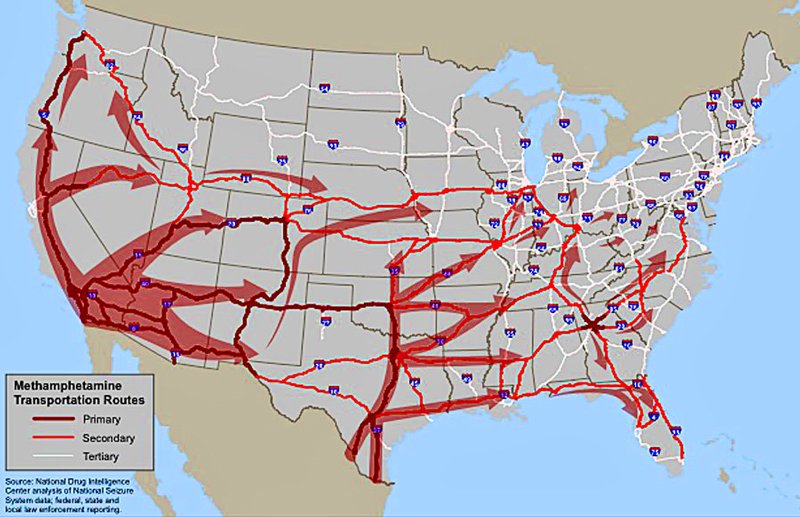
The Banking Cartels
Money laundering is an incredibly profitable business for banks. A conservative estimate by the international Financial Action Task Force (FATF) places money-laundering profits in the region of $2.1 trillion, or 3.6% of global GDP. The US State Department claims that between $19 and $29 billion are sent from the US back to Mexico.
How is this possible in a world of increasingly stringent banking laws and regulations?
Wachovia, a subsidiary of Wells Fargo, processed $380 billion for Mexican-currency-exchange houses between 2004-2007, a sum equal to one third of the country's GDP. Bank of America has admitted laundering $3 billion in Mexican drug money through just one of its Manhattan branches in 2006. JP Morgan, Standard Chartered, Citigroup, Western Union, and HSBC have all been publicly exposed as having acted as bankers for the drug cartels.
HSBC USA deserves special mention because it is the bank of choice for El Chapo's Sinaloa Cartel, processing some $670 billion in wire transfers to and from HSBC Mexico. For such excesses, Banks receive merely a slap on the wrist - HSBC paid $1.9 billion in fines, then the case was closed - and no banker ever goes to jail. The banks' earnings dwarf whatever wealth and power the drug lords accrue. It's unfathomable, until you understand that HSBC was formed specifically to launder the proceeds of Britain's massive 19th century opium racket in China. So they are merely doing what they were set up to do.
Regardless of the destructive costs in terms of people's lives, what self-respecting global bank would pass up the chance to be in on an 'industry' that accounts for 8% of the world's trade?. Wall Street, the City of London and other Western financial centers are not passive actors who serendipitously profit from drug trade; the real 'Capi di tutti capi', the major promoters and directors of operations, are all found there.
Mexican Police State

Using the military to perform police operations, tremendous bloodshed ensued, and the death toll increases alarmingly every year. The official death toll when Calderon left office was 120,000 homicides, and this stunning figure came from the INEGI, Mexico's National Statistics and Geography Institute, a government agency. For the previous 8 years, the number of homicides in Mexico was 8,000. By 2013, the death toll in Mexico's undeclared civil war had reached 144,000, and data for 2014 has yet to be released. This number could be far bigger because unmarked graves are turning up all the time.
Mexican military personnel jumped significantly during this period, from 200,000 on active duty in 2006, to 280,000 the following year, to 331,000 in 2009. Military and police abuse (and killings) skyrocketed as they applied battlefield military tactics to all sorts of crimes, including drug abuse and other petty crime.
Current President Peña Nieto has continued this military spending policy, signing off on a huge defense budget increase from 2012 to 2013 (from $400 million to $1.2 billion) for direct purchases from the US alone, but also taking in another $1 billion worth of weaponry through a US government program called 'FMS (Foreign Military Sales)', which sells discounted arms to foreign countries "whenever the [US] President thinks that to do so would strengthen the security of the US and promote world peace."
The cartels responded by building their own armies. Where did they get their firepower from? The USA of course! The nominal purpose of the US government's 'Fast and Furious' program was to "give agencies the ability to track weapons and their use in Mexico," but the program, like accidental weapons air-drops to ISIS, 'failed miserably' as 'blunder' followed 'blunder'.
The actual purpose of 'Fast and Furious' was to furnish the Mexican cartels with high-grade weaponry and communications tech. In fact, to ensure their arsenals matched that supplied to the Mexican government. When hints of this truth emerged, the US government explained it away as being necessary in order to "break a big case."
In exchange for information and assistance in quashing competing criminal syndicates, the CIA gives the Sinaloa Cartel a 'pass' on importing tons of drugs into the US, while supplying them with weapons that wipe out Sinaloa's competitors. And what else does the CIA get out of this? In effect, complete political control of Mexico, where terror reigns and heads roll. So you have the U.S. arming both sides, and the ones that end up paying - for the weapons via their taxes, and then with their lives - are ordinary Mexicans and Americans north and south of the border.
As with the War on Terror™, the War on Drugs™ is a farce
The War on Drugs™, like the War on Terror™, is nothing more than an empty slogan. There never has been any intention of "fighting drugs" or "eradicating" them. On the contrary, this is Big Business interests appropriating military terminology - and military hardware - to destroy people's lives, particularly the poorest people, who they want out of the electoral system.
40 years into the 'War on Drugs', the North American drug problem is worse than could even be conceived in the early 1970's. Drug use is at pandemic levels in the US and elsewhere, with the numbers of those on some form of drug treatment also rising. Then there's the explosion in arrests and incarceration, which are at all-time highs in the US, generating 'profitable markets' for the privatized prison industry.
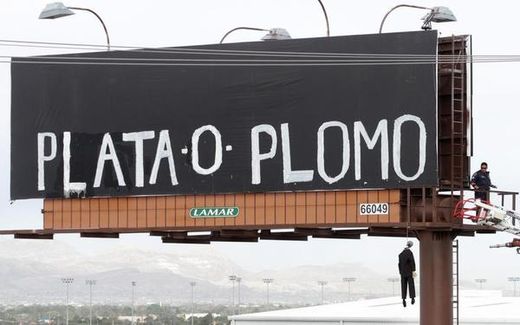
Right-wingers in the US have a field day berating 'Mexican illegal immigrants' and 'Mexican drug wars', and complain about 'cross-border crime', but they're generally oblivious to the extent to which US agencies and military operatives are responsible for it all. Leaked emails from a Mexican diplomat reveal that members of the Sinaloa Cartel enjoy such complete confidence of the US government that its US-trained and armed death squads are operating freely inside the US, while US Special Forces do likewise south of the border.
Speaking of death squads, the similarities between Sinaloa's and ISIS' practices are striking. Both groups supplement their funds by stealing oil and gas resources. Both distinguish themselves on being especially savage. Shared methods include beheadings, torture, extortion, terror attacks, and kidnappings.
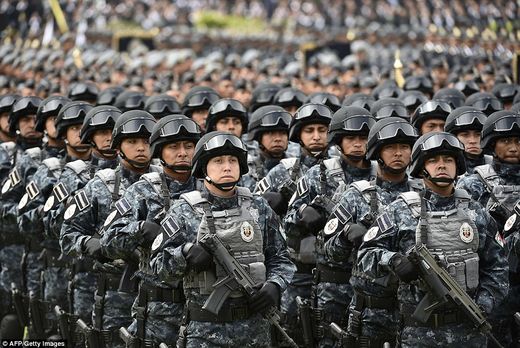
And the comparisons can be made both ways. Behind the religious mumbo-jumbo and ridiculous outfits, 'ISIS' is staffed by the dregs of the criminal underworld from as far away as the US and Pakistan. As soon as 'ISIS' appeared on the scene in June 2014, the Western corporate media was kind enough to inform world opinion that it was funded with nearly half a billion dollars in cash stolen from a bank in Mosul, northern Iraq. But a far less 'Hollywood' explanation for ISIS' deep pockets, as explained here by Joe Quinn, comes from a recent statement by Russia's anti-drug chief, Victor Ivanov, that the 'Islamic State' economy is based on the illegal drug trade - specifically, the CIA-controlled Afghan heroin trade.
Just like ISIS, the cartels can be viewed as imperial assets. These mercenaries have astonishing freedom to act, and on an international level; are reliable purchasers of American weapons; provide ideal justification for the US military and intelligence services to tighten their grip in the host country; and protect and run a fantastically profitable business.
The Hypocrisy
When the Mexican government talks about 'corruption' - how some prison guards, members of the police forces, or low-ranking public servants are corrupt - it is actually blaming the people, not the real perpetrators. When they claim after a shoot-out that the victims were 'members of organized crime', they are generally lying outright: most 'drug-related' homicides (some say 98%) are buried (sometimes literally) and never investigated, at all.
When you have a country with 50% of the population living below the poverty line, drug trafficking can understandably become a viable way to earn a living. Blaming the victim speaks to the hypocrisy (and a pathological lack of empathy) of those in Mexico's 'elite' criminal class who are themselves directly involved in the drug trade.
Ordinary people, in turn, tend to blame the Mexican government for the atrocities, but they are also missing the bigger picture. Mexico is a client state for the most corrupt entity of all: the criminal enterprise known as the US government, whose tentacles spread far beyond the visible reality for Mexicans, and has done so for a long time
So there is more to the escape of 'Guzmán, the Drug Lord' than the simplistic explanation that he bought his way out. Locally, his escape has been politically useful as a smoke-screen, distracting Mexicans from the pending devaluation of the peso, and the privatization of healthcare services. But beyond the media circus generated around this prison-break, it's reasonable to conclude that somebody higher up the 'cartel chain' wanted this drug CEO (fully) back in business.
The Real Victims...
...are the people. It cannot be otherwise. A drugged-up, terrorized, incarcerated, maimed, and compliant population is just too good an opportunity for psychopaths to not exploit. Sadly, our conclusion is as simple as it is terrifying: The terror game - the real one, the psychopaths' war against ordinary people everywhere - takes many forms, and will continue to worsen. The purpose of it all is the result we see today, both north and south of the U.S. border: a heavily militarized police state to 'keep the population in line' - which is to say, to prevent them from challenging the status quo. The capos in Washington and the banking cartel will never cease this senseless killing and will do whatever it takes to keep it going because, for them, the end always justifies the means.
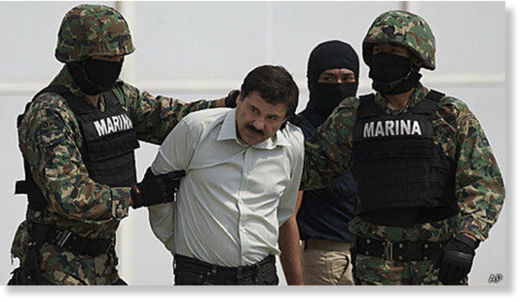
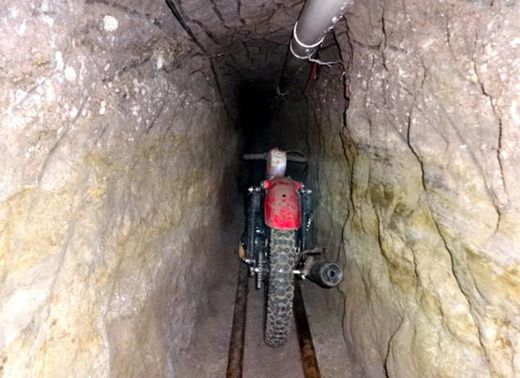
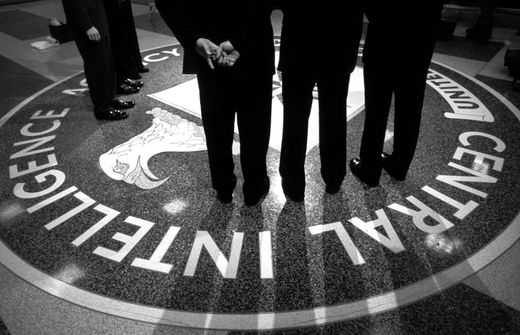
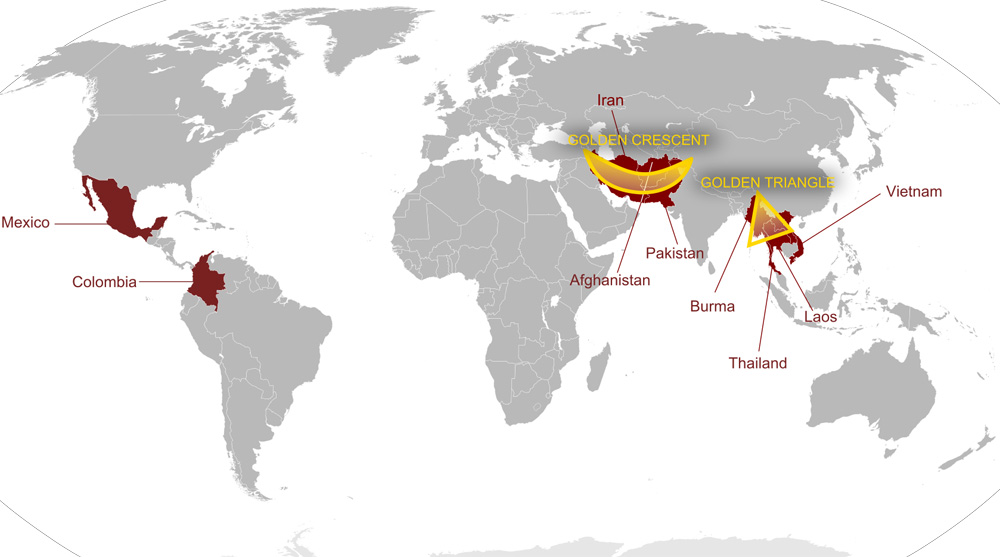
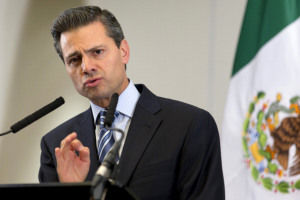
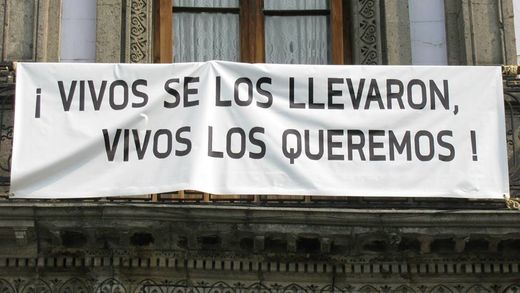



And..
"The nominal purpose of the US government's 'Fast and Furious' program was to "give agencies the ability to track weapons and their use in Mexico," but the program, like accidental weapons air-drops to ISIS, 'failed miserably' as 'blunder' followed 'blunder'."
Really? Coincidence, blunders? Come on, they are bought and paid for the cops and government officials in both Mexico and the US. Sure a few are dedicated, honest people. But they are outnumbered and pressured into silence and inaction.